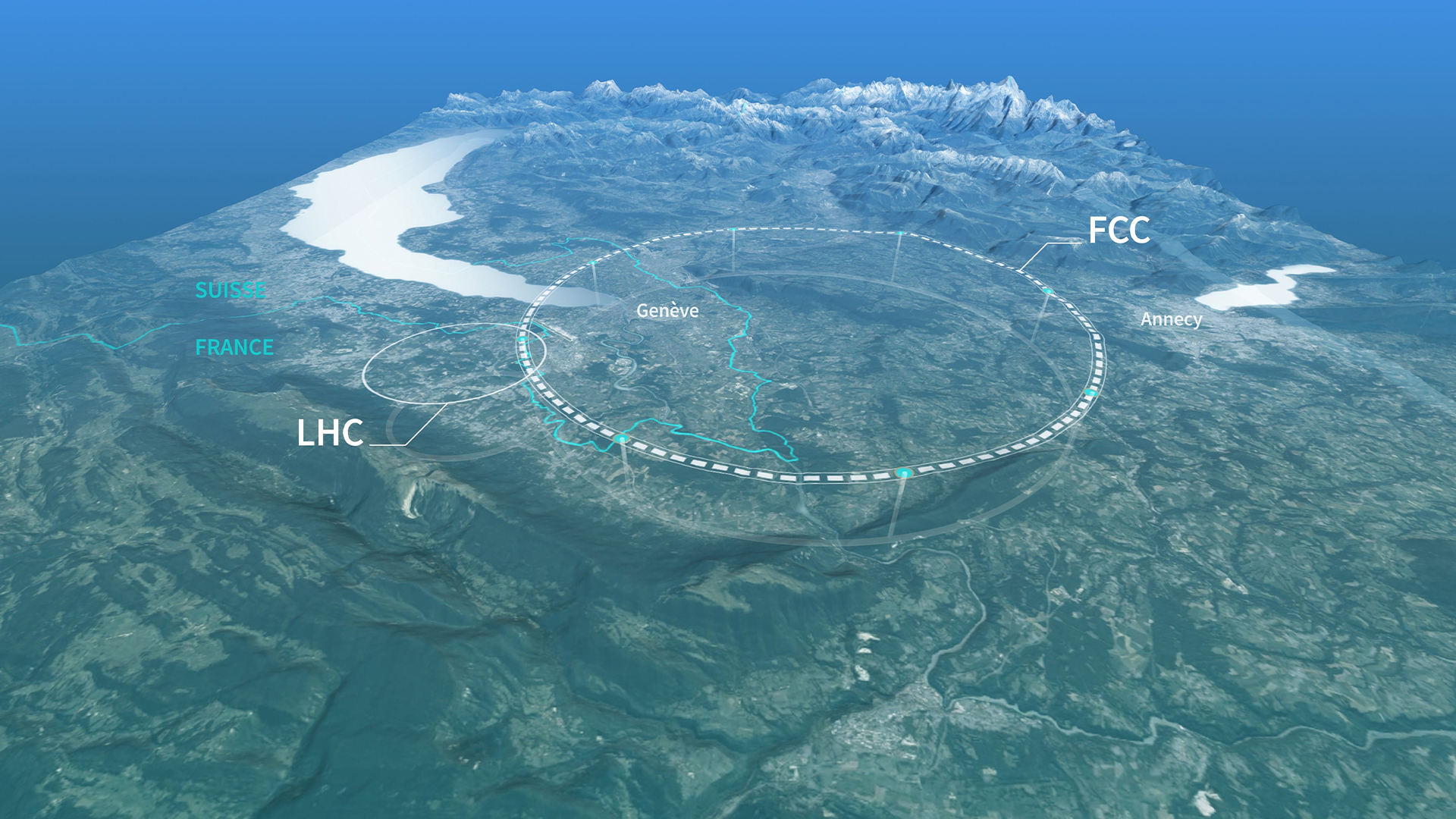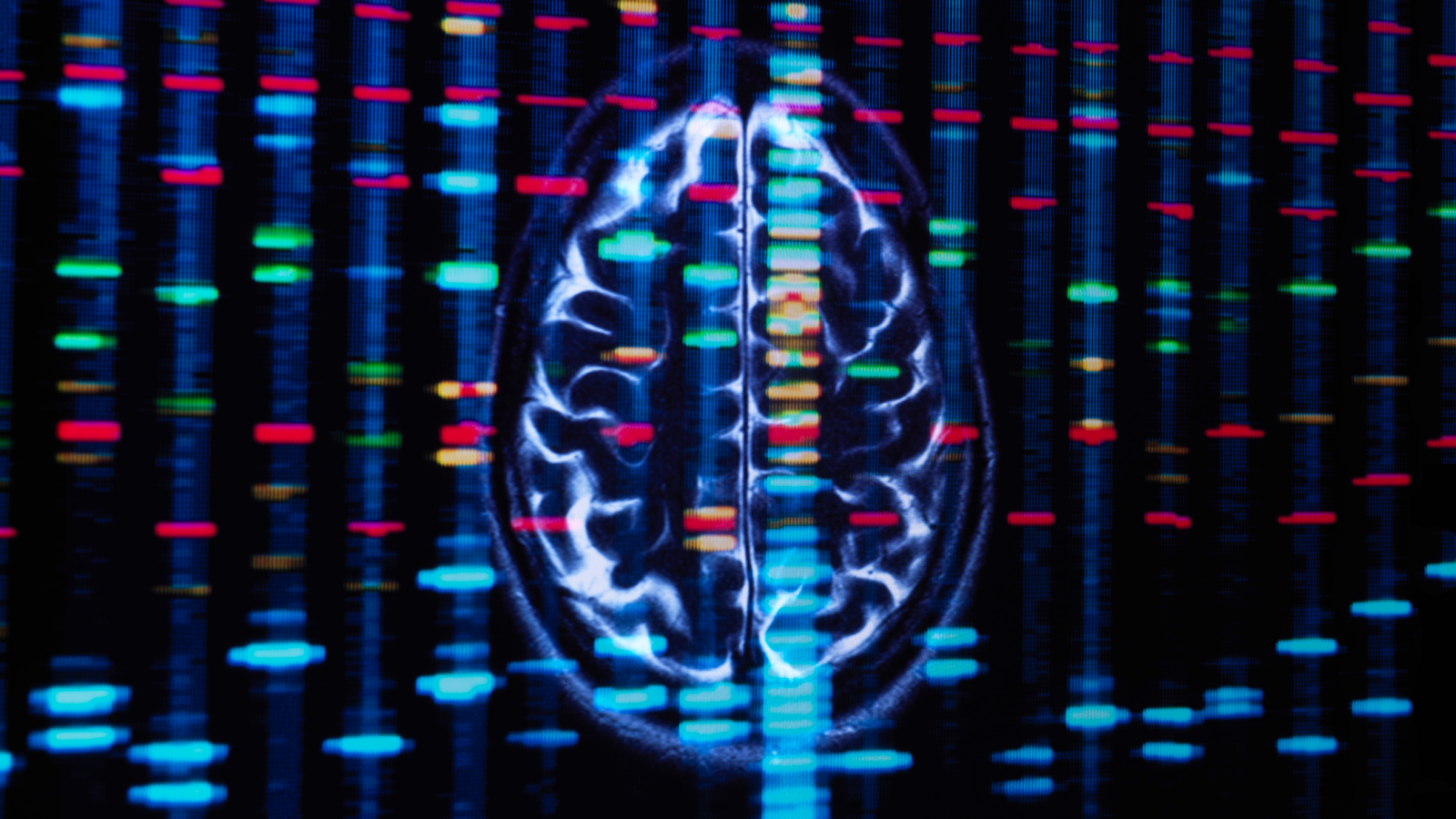CERN proposes $17 billion particle smasher that would be 3 times bigger than the Large Hadron Collider
CERN's proposed $17 billion particle collider would search for new and unknown physics, but it has drawn fire for its hefty price tag.

Researchers at the world's biggest particle accelerator have put forward proposals to build a new, even larger atom smasher.
The $17 billion Future Circular Collider (FCC) would be 57 miles (91 kilometers) long, dwarfing its predecessor, the 16.5-mile-long (27 kilometers) Large Hadron Collider (LHC), located at the European Organization for Nuclear Research (CERN) near Geneva.
Physicists want to use the FCC's increased size and power to probe fringes of the Standard Model of particle physics, the current best theory that describes how the smallest components of the universe behave. By smashing particles at even higher energies (100 tera electron volts, compared with the LHC's 14), the researchers hope to find unknown particles and forces; discover why matter outweighs antimatter; and probe the nature of dark matter and dark energy, two invisible entities believed to make up 95 percent of the universe.
Related: Our universe is merging with 'baby universes,' causing it to expand, new theoretical study suggests
"The FCC will not only be a wonderful instrument to improve our understanding of the fundamental laws of physics and nature," Fabiola Gianotti, CERN's director-general, said at a news conference Monday (Feb. 5). "It will also be a driver of innovation, because we will need new advanced technologies, from cryogenics to superconducting magnets, vacuum technologies, detectors, instrumentation — technologies with a potentially huge impact on our society and huge socioeconomic benefits."
Atom smashers like the LHC collide protons together at near light speed while looking for rare decay products that could be clues to new particles or forces. This helps physicists scrutinize their best understanding of the universe's most fundamental building blocks and how they interact, described by the Standard Model of physics.
Though the Standard Model has enabled scientists to make remarkable predictions — such as the existence of the Higgs boson, discovered by the LHC in 2012 — physicists are far from satisfied with it and are constantly looking for new physics that might break it.
Get the world’s most fascinating discoveries delivered straight to your inbox.
This is because the model, despite being our most comprehensive one yet, includes enormous gaps, making it totally incapable of explaining where the force of gravity comes from, what dark matter is made of, or why there is so much more matter than antimatter in the universe.
To unlock these new frontiers, physicists at CERN will use the sevenfold increase in beam energy of the FCC to accelerate particles to even higher speeds.
But the detector, despite having taken a promising step forward, is far from built. The proposals put forward by CERN are part of an interim report on a feasibility study set to be finished next year. Once it's complete and if the detector plans go ahead, CERN — which is run by 18 European Union member states, as well as Switzerland, Norway, Serbia, Israel and the U.K. — will likely look for additional funding from nonmember states for the project.
Despite the high hopes for what the new collider could find, some scientists remain skeptical that the expensive machine will encounter new physics.
"The FCC would be more expensive than both the LHC and LIGO [Laser Interferometer Gravitational-Wave Observatory] combined and it has less discovery potential," Sabine Hossenfelder, a theoretical physicist at the Munich Center for Mathematical Philosophy, wrote in a 2019 post on the platform X, formerly Twitter. "It would, at the present state of knowledge and technology, not give a good return on investment. There are presently better avenues to pursue than high energy physics."
Member states will meet in 2028 to decide whether to greenlight the project. Then, the first phase of the machine — which would collide electrons with their animatter counterparts, positrons — would come online in 2045. Finally, in the 2070s, the FCC would begin slamming protons into one another.

Ben Turner is a U.K. based writer and editor at Live Science. He covers physics and astronomy, tech and climate change. He graduated from University College London with a degree in particle physics before training as a journalist. When he's not writing, Ben enjoys reading literature, playing the guitar and embarrassing himself with chess.


